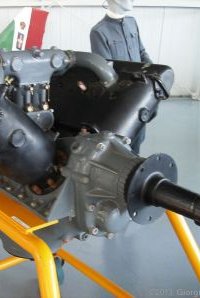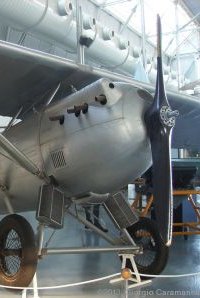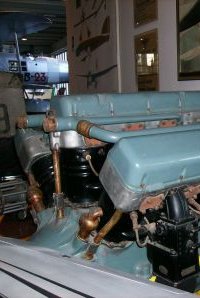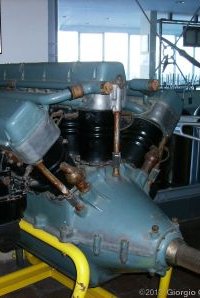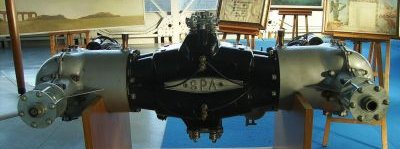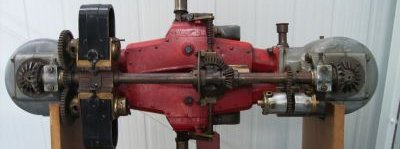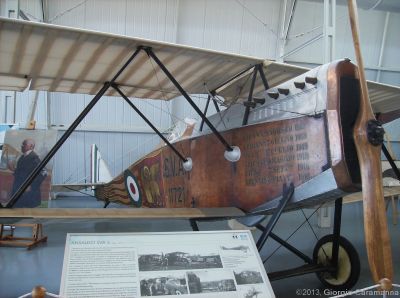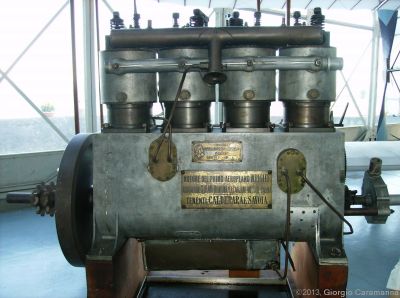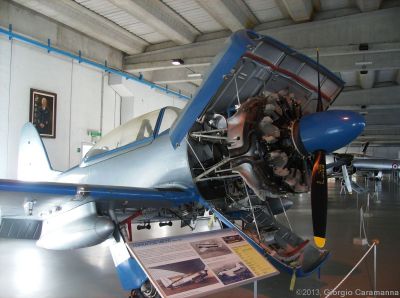 |
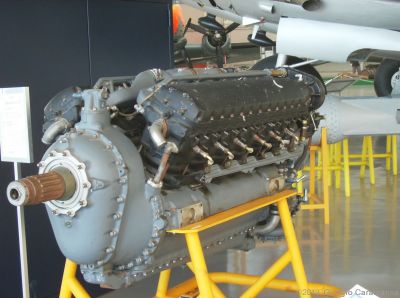 |
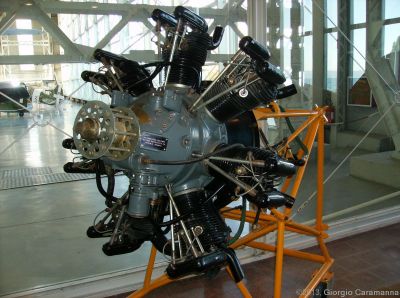 |
Aermacchi MB 323 with Pratt & Whitney R-1340
This was an experimental aircraft powered by a Pratt & Whitney R-1340 Wasp engine. Developed as a trainer, it was briefly tested at the Experimental Centre of Guidonia in Rome. It shares great similarity with the North America T-6 including the use of the same power plant. The cowling has a particular "petal" shape allowing for easy access to the engine for maintenance.
Technical Data: Type = Air-Cooled 9-Cylinder Radial; Bore = 146.05 mm; Stroke = 146.05 mm; Displacement = 22.02 l; Compression Ratio = 6:1; Max Power = 600 HP @ 2,250 rpm
|
Allison V-1710
Produced by American engine builder Allison as a high power unit for fighters, this engine was used in several aircraft including the Lockheed P-38, Bell P-39, Curtiss P-40 and North American P-51A.
Technical Data: Type = Liquid-Cooled 60° V-12; Bore = 139.7 mm; Stroke 152.4 mm; Displacement = 28.03 l; Compression Ratio = 6.65:1; Max Power = 1,250 HP @ 3,000 rpm |
Alpha Lynx
This engine was produced in 1928 by ALFA under license from Armstrong Siddeley. Even though it was not a modern engine, it was reliable and was of good use in aerobatics.
Technical Data: Type = Air-Cooled 7-Cylinder Radial; Bore = 127 mm; Stroke = 139.7 mm; Displacement = 12.39 l; Compression Ratio = 5:1; Max Power = 200 HP @ 1,900 rpm |
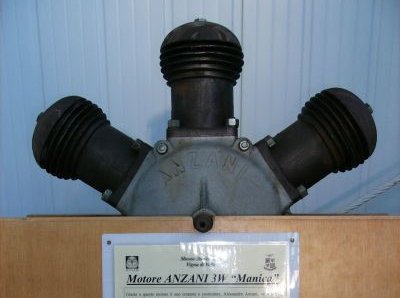 |
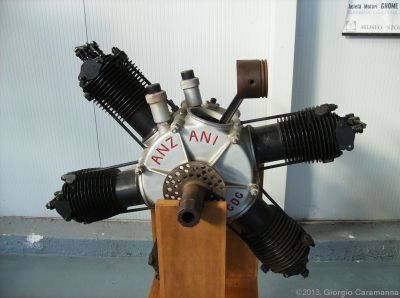 |
 |
Anzani 3W "Manica"
This engine produced by Carlo Anzani in 1908–1909 was used by Louis Bleriot as a substitute for the REP he used previously. Even if the Anzani engine is less powerful, it was considered more reliable.
Technical Data: Type = Air-Cooled 3-Cylinder 60° Fan; Bore = 105 mm; Stroke = 130 mm; Displacement = 31.17 l; Max Power = 25 HP @ 1,400 rpm |
Anzani 6A 4
The Anzani engines have a very simple and clean structure. These characteristics led to widespread diffusion of the engines; they were produced in the UK by the British Anzani Engine Co. and in Italy by Nazzaro and Franco Tosi. A peculiarity of the Anzani construction is that the cylinders are slightly misaligned in respect to the engine crankshaft, allowing the piston rods to work at a reduced angle.
Technical Data: Type = Air-Cooled 6-Cylinder Double-Row Radial; Bore = 90 mm; Stroke = 120 mm; Displacement = 4.580 l; Max Power = 40/45 HP @ 1,300 rpm |
Argus As-10C
This engine was built in 1934 but its development started in 1930. Its reliability allowed for a maintenance interval of 500 hr flight time. The engine was produced until 1945 with approximately 15,000 units released in total. It was adopted in a large number of aircraft including the aerobatic Fw 56 SToSSER as well as the Fiesler F1 156 (Stork), which can be considered as a precursor to STOL aircraft.
For this engine, Argus also considered a variable pitch propeller and the use of superchargers. A supercharged version of the engine, the As 401, adopted a centrifugal supercharger able to increase the power output up to 270 HP at about 10,000 ft for a short time.
The engine was still produced as late as 1954 by the French company Salmson as 8 As-04, and the power increased to 260 HP at 2,000 rpm.
Technical Data: Air-Cooled Inverted 90° V-8; Bore = 120 mm; Stroke = 140 mm; Displacement = 12.67 l; Compression Ratio = 5.9:1; Max Power = 240 HP @ 2,000 rpm
|
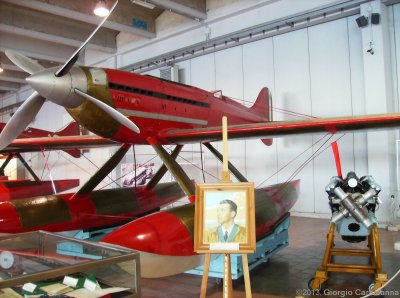 |
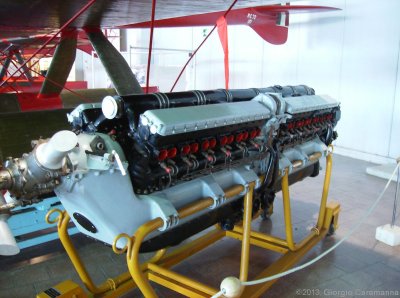 |
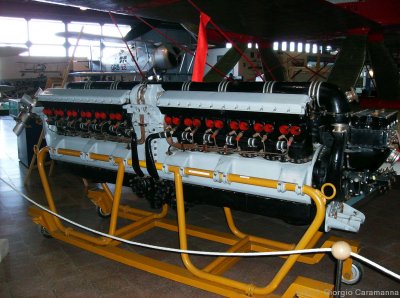 |
Fiat AS6
This engine was developed by Eng. Tranquillo Zerbi, director of Fiat’s "Special Projects Team", to be used in the Macchi MC72 racing hydroplane that set the absolute speed record at 709.202 Km/h (440.68 M/h), which is still unbeaten in this category. Basically, it was made by coupling two AS5s (former model) in tandem configuration.
The engine powers two contra-rotating tractor propellers aimed at reducing the torque that they would have been produced if both were turning in the same direction. There are four valves for each cylinder and eight carburetors. The engine is supercharged by a single stage centrifugal compressor.
Technical Data: Water-Cooled 60° V-24; Bore = 138 mm; Stroke = 140 mm; Displacement = 50.26 l; Compression Ratio = 7:1; Max Power = 3,100 HP @ 3,300 rpm |
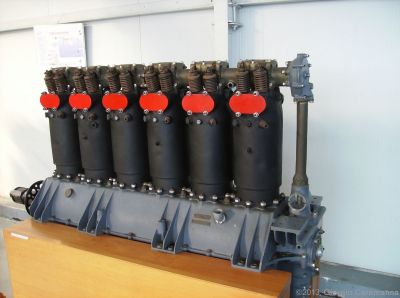 |
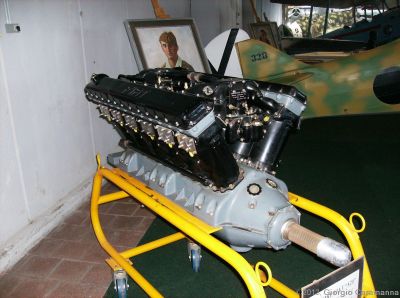 |
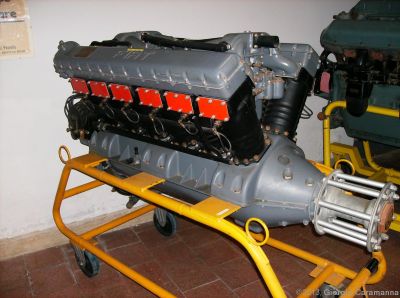 |
Fiat A12
In 1916, Fiat produced the A12 engine based on the design of the A10. Each cylinder was independent thereby making the servicing of the engine an easier task. Each cylinder had four valves and the crankshaft was supported by ball bearings on the side of the propeller. The A12 was soon followed by the A12bis, which was an enlarged version giving 300 HP at 1,600 rpm. The A12bis was produced in a larger quantity — up to 12,000 units — and equipped several different aircraft during WWI.
Technical Data: Type = Water-Cooled 6-Cylinder Inline; Bore = 160 mm; Stroke = 180 mm; Displacement = 21.71 l; Max Power = 250 HP @ 1,400 rpm
|
Fiat A20
This engine was built in 1925 and was the first of a series of engines of simple design, high power and reduced consumption of both fuel and oil. It was widely used on several aircraft for its reliability.
Technical Data: Type = Water-cooled 60° V-12; Bore = 135 mm; Stroke = 140 mm; Displacement = 18.68 l; Compression Ratio = 5.65:1; Max Power = 410 HP @ 2,060 rpm
|
Fiat A22T
This engine was developed by Fiat as a high-power low-consumption unit to be used for long-range flights. The A22T was used as a power unit for the SM64 hydroplane during a transatlantic cruise in July 1928 by the aviators Ferrarin and Del Prete. The A22RA, a modified version, was equipped with a reduction gearbox and was used on the hydroplanes SM55 during the Rome to Rio de Janeiro Atlantic flight.
Technical Data: Type = Water-Cooled 60° V-12; Bore = 135 mm; Stroke = 160 mm; Displacement = 27.48 l; Compression Ratio = 5.6:1; Max Power = 570 HP @ 1,900 rpm
|
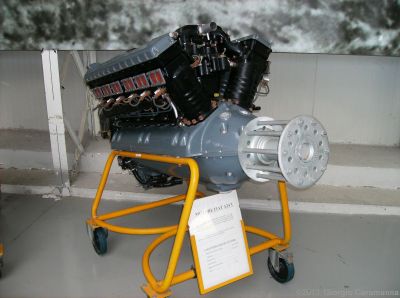 |
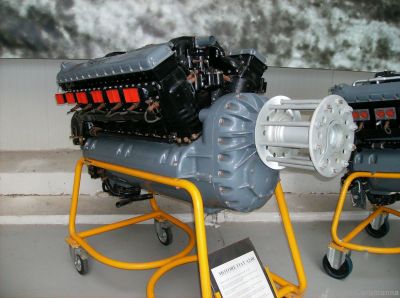 |
 |
Fiat A24R
This engine is an updated version of the A24T. It has four valves per cylinder and a reduction gearbox. It was very successful and was used on several aircraft, both military and civil.
Technical Data: Type = Water-Cooled 60° V-12; Bore = 140 mm; Stroke = 175 mm; Displacement = 32.33 l; Compression Ratio = 5.7:1; Max Power = 750 HP @ 2,200 rpm
|
Fiat A24T
This engine was derived from the A24 with changes to the carburetors, fuel pump, valves activation system and starter. The results were considered poor and it remained as an experimental prototype only.
Technical Data: Type = Water-Cooled 60° V-12; Bore = 140 mm; Stroke = 175 mm; Displacement = 32.33 l; Compression Ratio = 5.7:1; Max Power = 550 HP @ 1,900 rpm
|
Fiat A30RA Bis
This engine represents the ultimate development of a family of twelve cylinder engines and is directly derived from the experience gained by Fiat during the Schneider Trophy race. It has four valves for each cylinder and three carburetors.
Technical Data: Type = Water-Cooled 60° V-12; Bore = 135 mm; Stroke = 140 mm; Displacement = 24.047 l; Compression Ratio = 8:1; Max Power = 600 HP @ 2,600 rpm
|
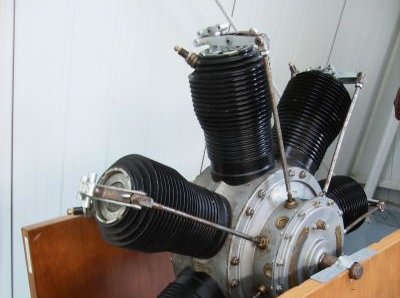 |
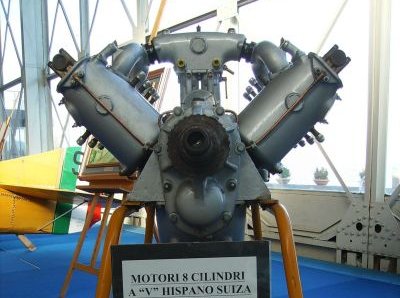 |
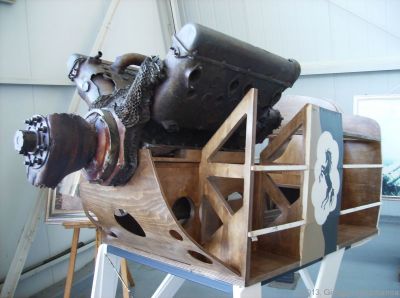 |
Gnome Omega 50HP
Designed and built by brothers Laurent and Louis Seguin in 1910–1911, it was used in the Bleriot XI.1 and Borel Military Monoplane. The single exhaust valve on the cylinder head was used both to expel the exhaust gas and to intake the air needed for combustion. Fuel was fed from the crankcase to the cylinders via automatic valves built into the piston heads.
Technical Data: Type = Air-Cooled 7-Cylinder Rotary; Bore = 110 mm; Stroke = 120 mm; Displacement = 7.98 l; Max Power = 50 HP @ 1,200 rpm
|
Hispano-Suiza V-8
The Swiss engineer Marc Birkigt designed this engine in 1915. Starting in 1916, it was widely used and up to 50,000 units were produced in Italy, France, England, Russia, Japan and the USA. The key feature was that the steel cylinders were screwed on to an aluminum basement that included the water cooling piping. The resulting engine was very compact and light. The engine was used to power SPAD aircraft.
Technical Data: Water-Cooled 90° V-8; Bore = 120 mm; Stroke = 130 mm; Displacement = 11.76:l; Compression Ratio = 5.33:1; Max Power = 180 HP at 1,700 rpm
|
Hispano-Suiza 150 HP of Francesco Baracca’s S.VII SPAD
This engine powered the WWI Italian ace Francesco Baracca’s S.VII SPAD that was shot down over Montello on 19 June 1918. This was Baracca’s last mission; he didn’t survive the crash. Francesco Baracca achieved 34 victories during the war. His crest – a black ramping horse (Cavallino Rampante) – was later donated by his mother to Enzo Ferrari who adopted the symbol as the trademark for his racing cars in 1929 and for the subsequent production of sport cars. Given the great importance — both historical and sentimental — of this engine, a faithful restoration of the front section of a SPAD was undertaken in order to provide an adequate structure for the engine to be exposed.
|
|
|
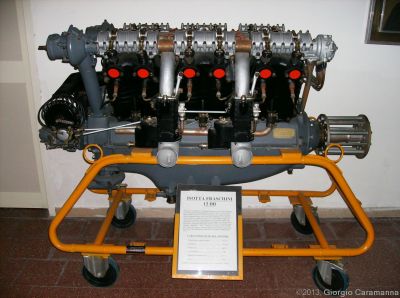 |
|
Hispano-Suiza 42/8
This engine propelled the Ansaldo AC 2 fighter that equipped the first assault division of the Italian Air Force in 1925. The airframe was an all-metal construction making it extremely rugged.
Technical Data: Type = Water-Cooled 90° V-8; Bore = 120 mm; Stroke = 130 mm; Displacement = 11.76 l; Compression Ratio = 4:72:1; Max Power = 140 HP @ 1,900 rpm
|
Isotta Fraschini 12DB
Isotta Fraschini produced this engine in Italy in 1924 under license from the French company Lorraine-Dietrich. The engine has two carburetors, one for each row of cylinders, and the cylinders have two valves. It was used for heavy military aircraft at the end of the First World War and for civil aviation applications soon after.
Technical Data: Type = Water-Cooled 60° V-12; Bore = 120 m; Stroke = 180 mm; Displacement = 24.43 l; Compression Ratio = 5.5:1; Max Power = 400 HP @ 1,700 rpm
|
Isotta Fraschini Asso 750
This is the first of a famous series of Isotta Fraschini engines based on a W cylinder configuration. Three carburetors are used, one for each bank of six cylinders.
The W configuration was likely inspired by the similar structure used in 1916 by Arthur Rowledge in his Napier Lion, which was 12 cylinders over three rows at 60o.
The 750X, the last evolution of this engine family, was used during the transatlantic flight from Italy to the USA and for touring the USA for a total 12,400 mile trip from July 1, 1933 to August 12, 1933.
Technical Data: Type = Water-Cooled 40° W-18; Bore = 140 mm; Stroke = 170 mm; Displacement = 47.105 l; Compression Ratio = 5.7:1; Max Power = 850 HP @ 1,800 rpm
|
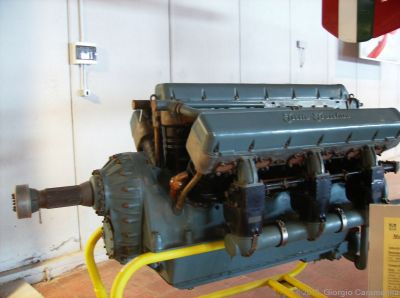 |
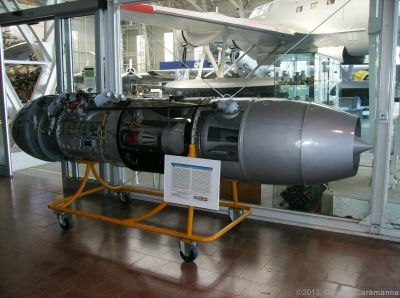 |
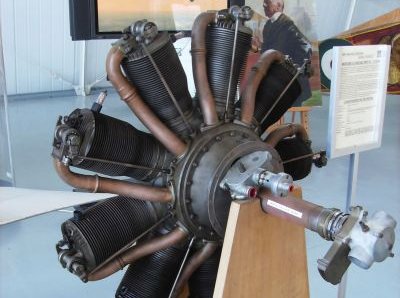 |
Isotta Fraschini Asso 750 RC35
This engine has 18 cylinders in 3 rows in a fan structure. Each cylinder has four valves. The engine has a single stage centrifugal compressor allowing the power to increase at critical moments such as during takeoff. Developed by Eng. Cattaneo, it was derived from the M2-800 model used by the racing M67 hydroplanes in the Schneider Trophy of 1929.
Technical Data: Water-Cooled 40° W-18; Bore = 140 mm; Stroke = 170 mm; Displacement = 47.7 l; Compression Ratio = 5.7:1; Max Power = 955 HP
|
Junker Jumo 109-004 B
Dr. Ansel Franz designed this engine with the first prototype (of lesser power) tested in 1941 on a Bf/Me 110. Due to the shortage of high-quality alloys, the engine had very short lifespan — usually only around 25 flight hours. Despite this shortcoming, it was used in the last phase of the Second World War as a power plant for Me 262 jet fighters.
Several innovative approaches were used in the engine such as hollow turbine blades for a more efficient cooling and a variable nozzle for optimization of the jet exhaust flow in function of the required power and speed of the aircraft. A small two-stroke 10W auxiliary engine was used as starter.
Technical Data: Type = Single-Spool Axial Flow Turbojet; Eight-Stage Axial Compressor; Six Tubular Combustion Chambers; Single Stage Turbine; Compressor Ratio = 3.5:1; Max Takeoff Thrust = 2,000 lbF
|
Le Rhone 9J
In 1913, the Le Rhone catalogue showed four models, but was then reduced to just two models (the 9C and 9J models of 80 and 110/120 HP respectively) in 1919 after the fusion with Gnome. In Italy, the main production was of the 9J model, which was adopted for a large number of different aircraft as proof of its reliability and efficiency.
Technical Data: Type = Air-Cooled 9-Cylinder Rotary; Bore = 112 mm; Stroke = 170 mm; Displacement = 15.07 l; Compression Ratio = 5.0:1; Max Power = 110/120 HP @ 1,200 rpm
|
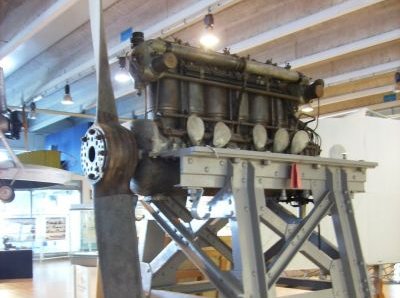 |
 |
|
Maybach 245 HP
This engine equipped the Italian Airships Norge and the ill-fated Italia. The Maybach company was founded by Count Zeppelin (the famous designer of German airships) and Karl Maybach on March 23, 1909 at Bissigen/Enz. It was then transferred to Friedrichshafen in 1912 where it produced all the Zeppelin’s engines up to the LZ 127. No technical data are available.
|
Piaggio Stella VII z
This was the less powerful aero engine produced by Piaggio in collaboration with the French Gnome. Piaggio, instead of simply buying the license for the production of this engine, decided to buy the patents for the parts that were the most interesting for the development of the engine.
Technical Data: Type = Air-Cooled 7-Cylinder Radial; Bore = 146 mm; Stroke = 165 mm; Displacement = 19.33 l; Compression Ratio = 5.5:1; Max Power = 400 HP @ 2,100 rpm
|
SPA Faccioli
In 1908, the Societa’ Piemontese Automobili – SPA (Piedmont Automobile Society) started the development of some aircraft engines. Aristide Faccioli, an engineer who already designed an aircraft engine, was chosen for the development of the new SPA engines. These engines are based on opposed pistons sharing a common combustion chamber (one chamber for every two pistons). The gearbox transmits power to two counter-rotating propellers aimed at reducing engine vibration. These concepts were further developed in Junkers and Napier diesel engines.
Technical Data: Type = Water-Cooled 4-Cylinder Opposed Piston; Displacement = 7.97 l; Max Power = 90 HP at 1,600 rpm
|



















